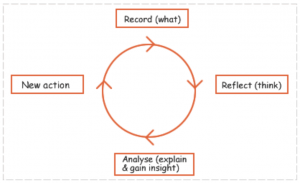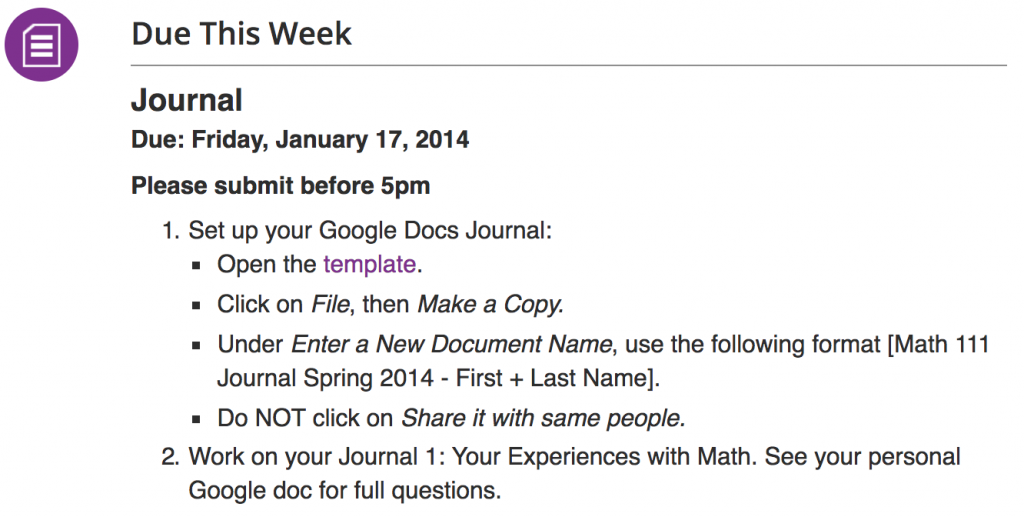Overview
Journaling is a reflective learning strategy that has students reading a text (or viewing other media), thinking more deeply about it (Rhoad, 2017), and drawing connections to what they already know. Journals tend to be private while blogs tend to be public. Both journals and blogs can help students process and clarify their thoughts through writing Killion (1999). RMIT University’s Study & Learning Centre visualizes a reflection cycle that happens through journaling (see figure below) going from record, to reflect, to analyse, to new action. For details, see Reflective Journals.

More on using Journals from Kent State Online, Office of Continuing & Distance Education
Advantages
Benefits of using journaling in classroom environments (King and LaRocco 2006, p.2)
- Explicate connections between new knowledge and previous knowledge
- Examine relationships between what is being learned and the rest of the world
- Reflect on personal goals
- Sort out experiences
- Solve problems
- Enhance reflective thinking
- Enhance metacognition
- Improve problem solving and critical thinking
- Facilitate self-exploration, personal growth, and value clarification
- Synthesize ideas, experiences and opinions after instruction
Considerations
King and LaRocco (2006) noted the following considerations when journaling is used as a teaching strategy:
- The loss of instructional time needed to deliver course material; thus consider using e-journaling
- Journal feedback should be free of criticism, formative in nature, focused on the process of learning
- Reading students’ journals: on the one hand, it’s a way to establish a relationship between a student and the instructor; on the other hand, teacher involvement may induce the lack of freedom for students’ expressing opinions and emotions
- Guidelines for instructors to assess journal entries:
- Respect: making confidentiality and boundary setting essential
- Justice: providing equitable feedback
- Beneficence: guarding privacy, focusing on learning rather than therapy
- Self-awareness: practicing the reflection you preach
- Caring: providing clear expectations and guidelines
Examples
- Math 111
The screenshot below gives instructions to Math 111 students on how to to set up a Google document for their personal math journal. View the Math 111 Journal (Template) for details.

- Psychology 380
Journal Assignment includes guidelines, format, grading, remarks - Electrical Engineering
Reflective Journal Assignment Guide (pdf) in addition to specifc structure for the entries, also includes samples of what’s expected.






